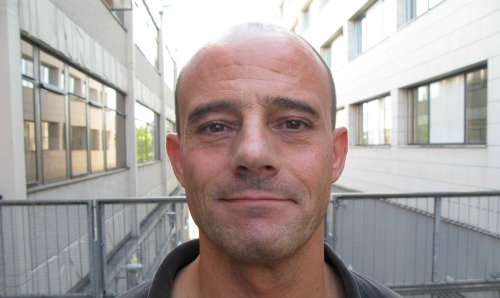Making cleaner energy cheaper
If we’re to mitigate the impact of climate change, humankind needs to find secure and affordable low-carbon energy that will help us meet international targets set to tackle global warming. Ongoing nuclear research at The University of Manchester may provide a vital next step towards a greener tomorrow.
Global problem: the cost of low-carbon energy
Research beacon breakthroughs
Find out how world-class academic research is commercialised by scientists, engineers, medical professionals, business leaders and policymakers at Manchester.
To avoid the worst impacts of anticipated climate change, the 2015 UNFCCC Paris Agreement set a global warming target that aims to restrict increases in average global temperatures to well below 2°C, relative to pre-industrial levels. To ensure we do not exceed this target, we must reduce greenhouse gas emissions – principally by transitioning to a largely carbon-free energy economy using alternative sources to fossil fuels.
Nuclear energy is currently the only mature, proven, demonstrably cost-effective energy technology which does not directly emit carbon. However, while reactors are very cost-effective to run, nuclear power plants are very expensive to build.
Development of the UK nuclear new build programme is underway with the construction of the Hinkley Point C twin station. It had been proposed to build in total 12 new reactors by 2030, adding 16 GW of nuclear electricity generating capacity at an estimated cost of £100 billion. However, two of the developers have failed to find funding so there will be a delay in achieving the required capacity. Finding ways of speeding up construction and reducing costs could enable this delay to be minimised.
Manchester solution: cheaper nuclear reactor construction
Manchester researchers are working on design innovations and new technologies to reduce the construction cost of nuclear reactors. Breakthrough research has looked at adopting carbon dioxide thermodynamic cycles for nuclear power conversion.
“Working with Enel gives our research immediate industry impact. We investigated closed carbon dioxide cycles for use in the Mochovce power station that is currently under construction in the Slovak Republic. Future work will consider rolling out this research to other nuclear reactor designs.”
Dr Andrea Cioncolini / Lecturer in Thermal Hydraulics
In nuclear power stations with pressurised water reactors, heat generated in the reactor core is used to produce high-pressure steam to run the turbines and produce electricity. Our researchers teamed up with Enel Produzione SpA in Rome (part of the Enel Group – a multinational energy company working in 31 countries across four continents) to examine the feasibility of replacing steam turbines with carbon dioxide turbines in existing nuclear power stations.
Dr Andrea Cioncolini, Lecturer in Thermal Hydraulics, says: “Steam turbines and associated machinery are bulky due to the very low density of the steam discharged at the last stage of the turbines. Carbon dioxide can be used instead and operated at much higher density than steam.

“We found that replacing steam with carbon dioxide would yield ten times more compact turbines and associated machinery, meaning huge savings – smaller components are generally far cheaper to build, install and maintain.
“Working with Enel gives our research immediate industry impact. We investigated closed carbon dioxide cycles for use in the Mochovce power station that is currently under construction in the Slovak Republic. Future work will consider rolling out this research to other nuclear reactor designs.”
Industry-changing impacts
Using smaller carbon dioxide turbines in place of bulky steam turbines would mean:
- huge potential savings on construction times, installation costs and plant footprint, making nuclear energy cheaper to produce;
- no negative impact on the plant efficiency, therefore no added costs detracting from the benefits;
- immediate industry (and environmental) impact, getting more nuclear power onto the grid in the quickest possible time.
Find out more
Read the research paper:
- 'On the adoption of carbon dioxide thermodynamic cycles for nuclear power conversion: A case study applied to Mochovce 3 nuclear power plant', Applied Energy, 181, 2016
Meet the researchers:
- Dr Andrea Cioncolini, Lecturer in Thermal Hydraulics, The University of Manchester’s Department of Mechanical, Aerospace and Civil Engineering
- Dr Lorenzo Santini, Project Manager, Enel Engineering and Research
- Dr Carlo Accornero, Project Director, Enel Engineering and Research
